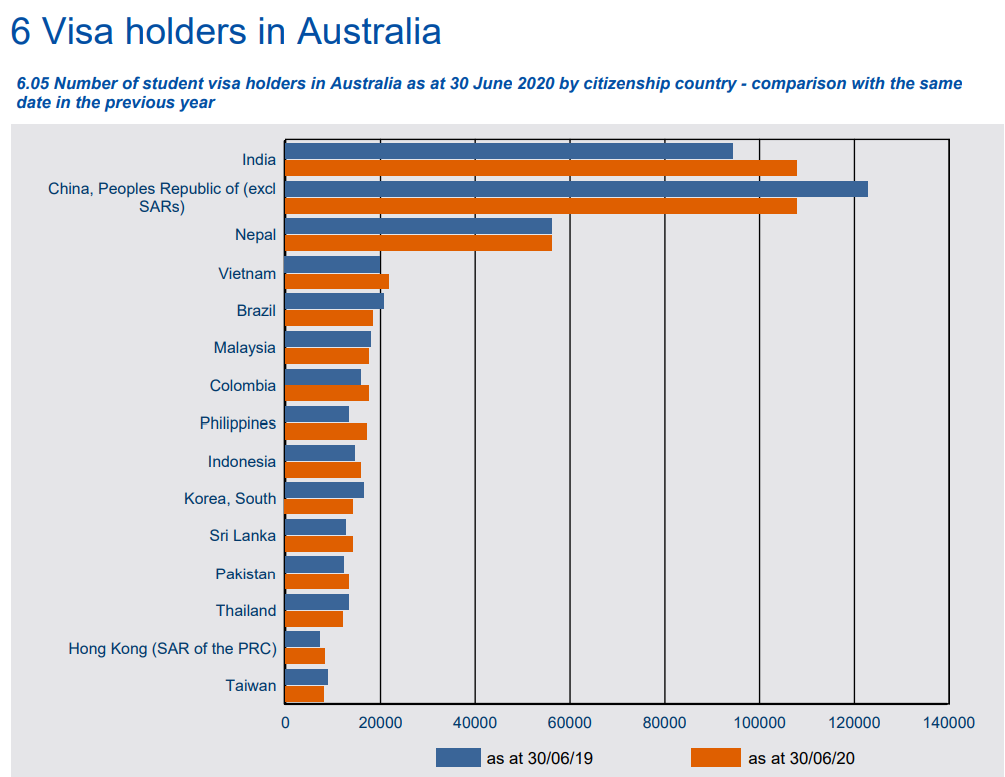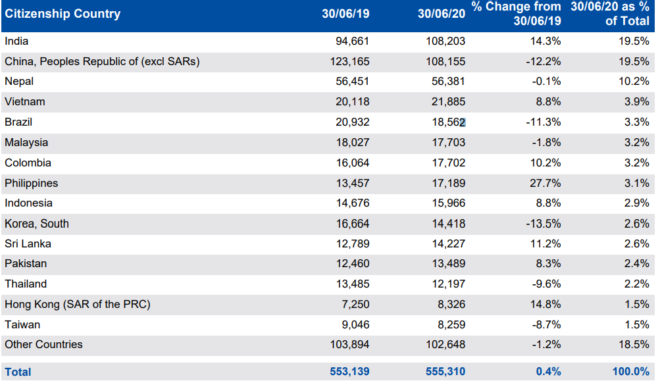Last year, the Department of Home Affairs tightened visa rules for students from India, Nepal and Pakistan, deeming them “high-risk” and requiring applicants to demonstrate strong English-language proficiency and prove increased financial capacity in order to qualify for a student visa.
These visa changes followed a Four Corners expose on Australia’s international student industry, which was especially scathing of the quality of students coming from the Indian sub-continent and reported widespread academic misconduct, plagiarism, and high failure rates.
The below correspondence from Murdoch University Professor, Benjamin Reilly, highlights the problems that have arisen from the strong growth in Indian students at Australia’s educational institutions, which has badly eroded pedagogical standards:
“In semester one 2018 we experienced a surge in new international students into some postgraduate courses. This surge increased sharply in semester two 2018, with several hundred new students, mostly from the Punjab region of India, enrolling in a small number of postgraduate courses.
“While some were OK, many do not have the language skills to study at a postgraduate level and have thus been unable to participate in class or complete assessments for the units legitimately.
“Hence we now have a much larger number of academic misconduct issues, supplementary assessments and outright failures than we have previously experienced in the units in which this cohort has enrolled”…
Fellow lecturer and academic misconduct investigator, Dr Duncan Farrow, reported similar problems with Indian students failing en mass:
“Perhaps the most telling statistic of them all: 48 of the 80 students admitted to the MIT in semester one this year had at least one academic misconduct finding against them,” he wrote.
“Not only was there a huge increase in numbers of misconduct cases but additionally the investigations were more difficult due to the poor language capabilities of many of the students involved.
“I have just reviewed the results for students from the Punjab region in BSC100 Building Blocks for Science Students and it is depressing. Of the 52 students in this category, 12 have passed the unit outright — a pass rate of less than 25 per cent.
New Zealand recorded similar shenanigans last month, whereby large numbers of Indians arrived on student visas primarily for the purposes of paid employment and permanent residency:
In 2016, at the height of an export education boom, 11,024 Indians came to New Zealand on student visas.
Most came from the remote, rural Sikh-majority Punjab province, lured by promises made by unlicensed education agents and illusory sales pitches by tertiary institutions and our government that New Zealand offered a straightforward “pathway to residency”…
Bhavdeep Singh, who still hasn’t attained residency after five years of hard and allegedly exploitative work in a Rotorua liquor store, is scornful.
“Because the Government needed so much money, they got a huge amount of students without ILETS [English language qualifications] and other proper documents – so when they needed us, they can bring us without proper investigation,” he says. “Now when we need them, they are breaking [promises]”…
Half of all overseas students arrive here via an agent. And while immigration agents in this country must be licensed, offshore education agents are not. That means there’s no regulation of the promises they make…
Students will often borrow against land or homes to finance their study, but in some cases, says Malkiat Singh, agents construct sophisticated financial arrangements to skirt Immigration NZ inquiries into students’ finances…
Tertiary education recruitment from India has reached such an extent that many business courses will have an entirely Indian cohort. Some, says McClymont, will have a Hindi translator in the classroom…
Bhavdeep Singh laughs at the business courses he studied. “The education I was getting here I can compare to like my tenth grade school”…
The Indian students who come here tend to be poorer than from other countries, study at lower-quality establishments and need employment quickly…
“Every student who comes from overseas spends 30 grand on their studies – and nobody is going to spend that if they’re not going to get residency at the end.”
Both he and Bhavdeep Singh, who’ve taken employment court actions against their former employers, are angry that the residency rules keep changing, pushing the dream further away…
With this background in mind, it is disturbing to report that India (108,203) has overtaken China (108,155) to become Australia’s biggest source of international students, according to the Department of Home Affairs’ latest student visa report:


This comes after Indian student visa numbers surged by 14.3% in the year to June 2020.
Clearly, Australia’s education industry has reached deep down the quality barrel in order to keep the international student-migration ponzi going.
RIP university entry and pedagogical standards.

